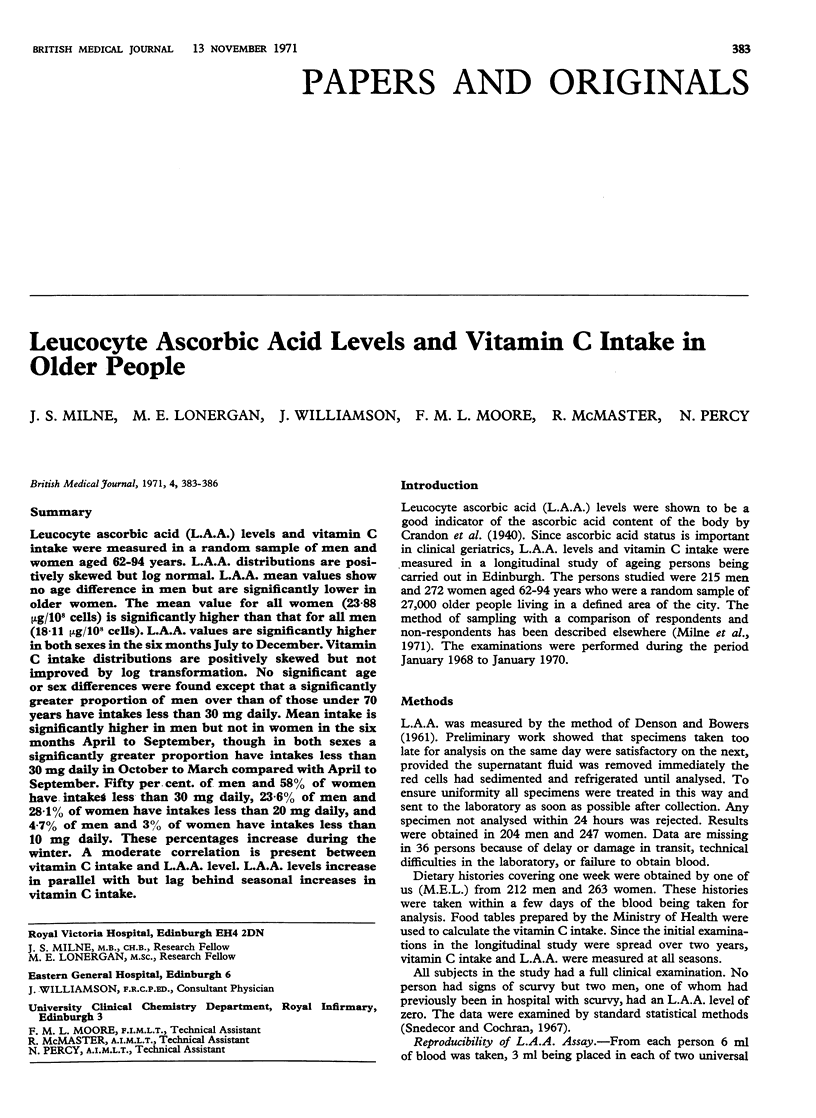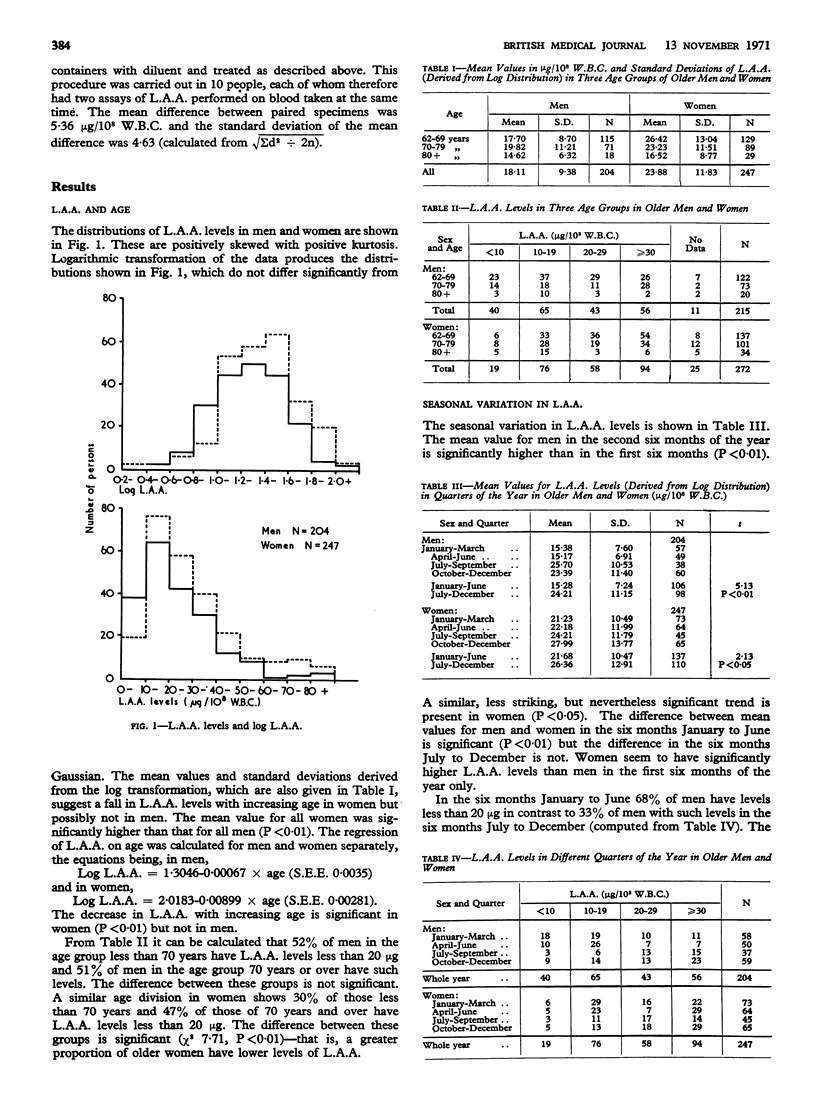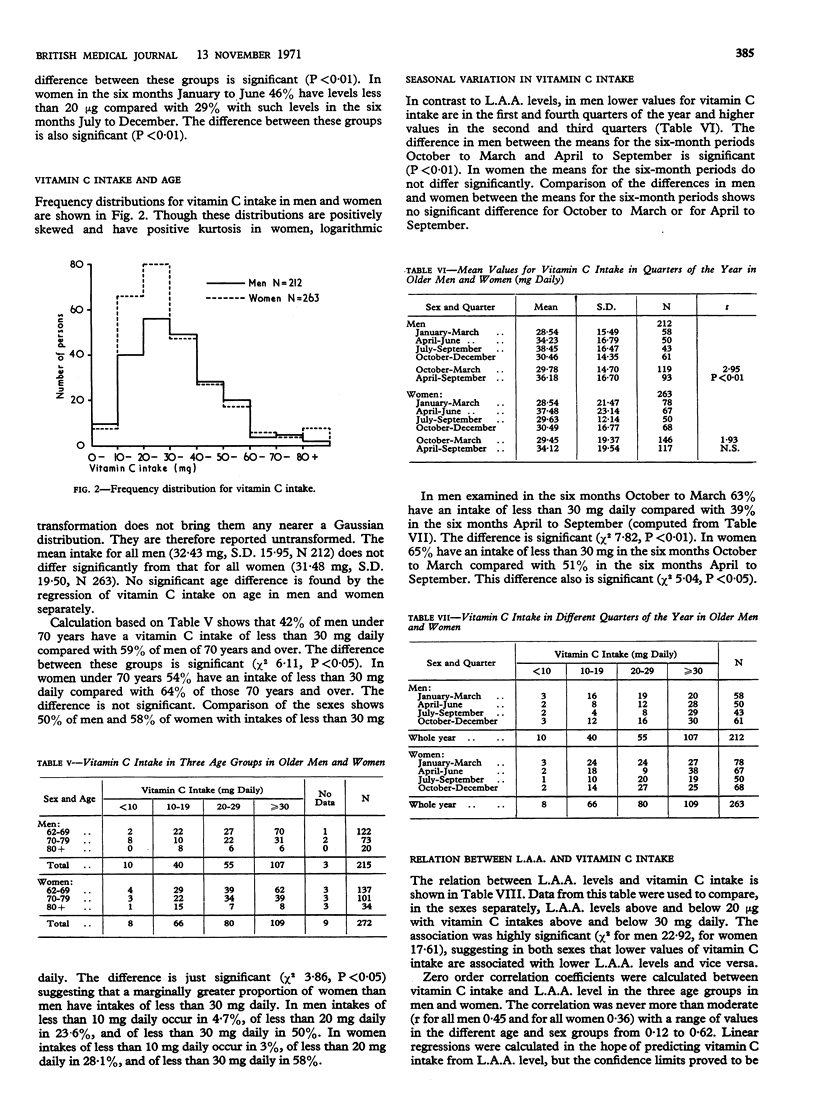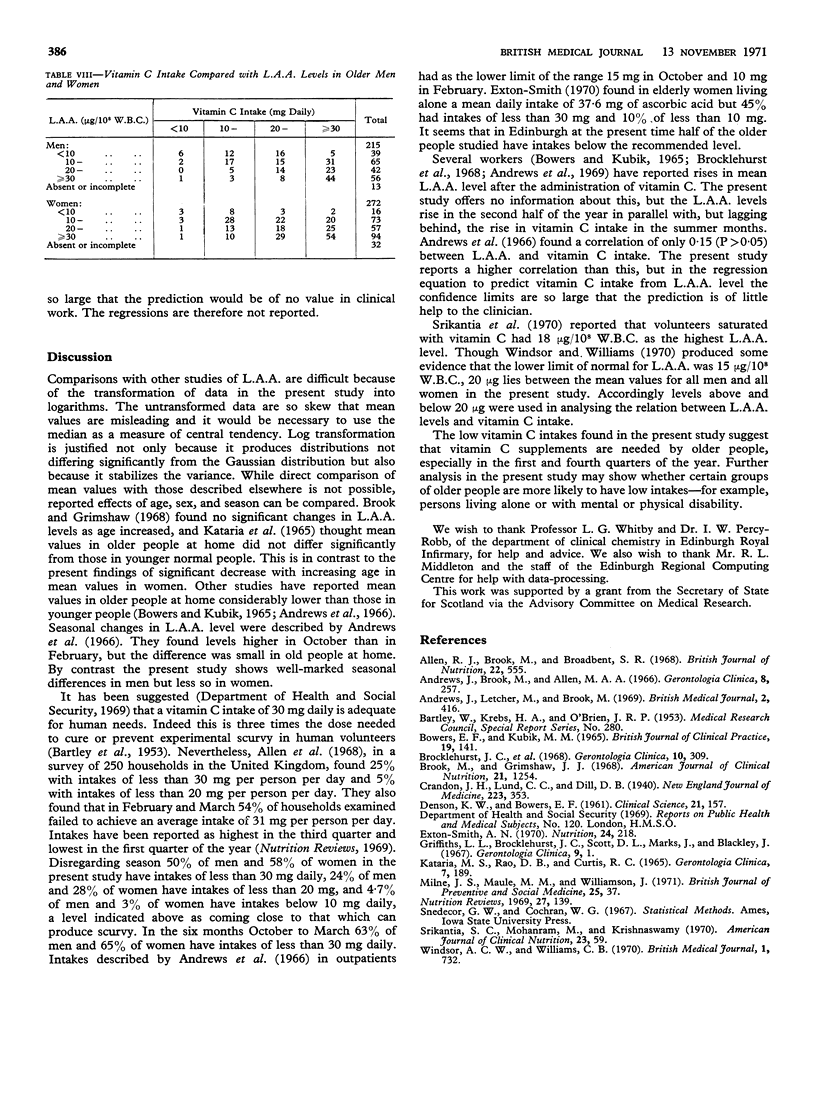Abstract
Leucocyte ascorbic acid (L.A.A.) levels and vitamin C intake were measured in a random sample of men and women aged 62-94 years. L.A.A. distributions are positively skewed but log normal. L.A.A. mean values show no age difference in men but are significantly lower in older women. The mean value for all women (23·88μg/108 cells) is significantly higher than that for all men (18·11 μg/108 cells). L.A.A. values are significantly higher in both sexes in the six months July to December. Vitamin C intake distributions are positively skewed but not improved by log transformation. No significant age or sex differences were found except that a significantly greater proportion of men over than of those under 70 years have intakes less than 30 mg daily. Mean intake is significantly higher in men but not in women in the six months April to September, though in both sexes a significantly greater proportion have intakes less than 30 mg daily in October to March compared with April to September. Fifty per cent. of men and 58% of women have intakes less than 30 mg daily, 23·6% of men and 28·1% of women have intakes less than 20 mg daily, and 4·7% of men and 3% of women have intakes less than 10 mg daily. These percentages increase during the winter. A moderate correlation is present between vitamin C intake and L.A.A. level. L.A.A. levels increase in parallel with but lag behind seasonal increases in vitamin C intake.
Full text
PDF



Selected References
These references are in PubMed. This may not be the complete list of references from this article.
- Allen R. J., Brook M., Broadbent S. R. The variability of vitamin C in our diet. Br J Nutr. 1968 Dec;22(4):555–563. doi: 10.1079/bjn19680065. [DOI] [PubMed] [Google Scholar]
- Andrews J., Brook M., Allen M. A. Influence of abode and season on the vitamin C status of the elderly. Gerontol Clin (Basel) 1966;8(5):257–266. doi: 10.1159/000244962. [DOI] [PubMed] [Google Scholar]
- BOWERS E. F., KUBIK M. M. VITAMIN C LEVELS IN OLD PEOPLE AND THE RESPONSE TO ASCORBIC ACID AND TO THE JUICE OF THE ACEROLA (MALPIGHIA PUNICIFOLIA L.). Br J Clin Pract. 1965 Mar;19:141–147. [PubMed] [Google Scholar]
- Brocklehurst J. C., Griffiths L. L., Taylor G. F., Marks J., Scott D. L., Blackley J. The clinical features of chronic vitamin deficiency. A therapeutic trial in geriatric hospital patients. Gerontol Clin (Basel) 1968;10(5):309–320. doi: 10.1159/000245198. [DOI] [PubMed] [Google Scholar]
- Brook M., Grimshaw J. J. Vitamin C concentration of plasma and leukocytes as related to smoking habit, age, and sex of humans. Am J Clin Nutr. 1968 Nov;21(11):1254–1258. doi: 10.1093/ajcn/21.11.1254. [DOI] [PubMed] [Google Scholar]
- DENSON K. W., BOWERS E. F. The determination of ascorbic acid in white blood cells. A comparison of W.B.C. ascorbic acid and phenolic acid excretion in elderly patients. Clin Sci. 1961 Oct;21:157–162. [PubMed] [Google Scholar]
- Milne J. S., Maule M. M., Williamson J. Method of sampling in a study of older people with a comparison of respondents and non-respondents. Br J Prev Soc Med. 1971 Feb;25(1):37–41. doi: 10.1136/jech.25.1.37. [DOI] [PMC free article] [PubMed] [Google Scholar]
- Windsor A. C., Williams C. B. Urinary hydroxyproline in the elderly with low leucocyte ascorbic acid levels. Br Med J. 1970 Mar 21;1(5698):732–733. doi: 10.1136/bmj.1.5698.732. [DOI] [PMC free article] [PubMed] [Google Scholar]


